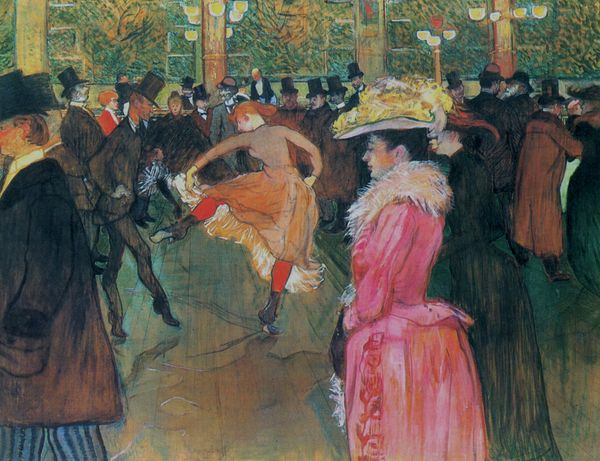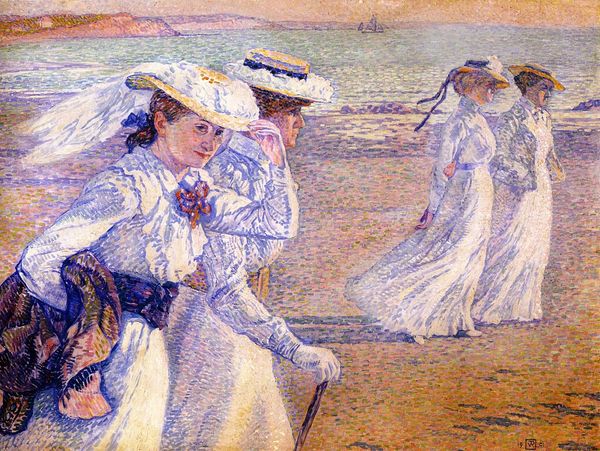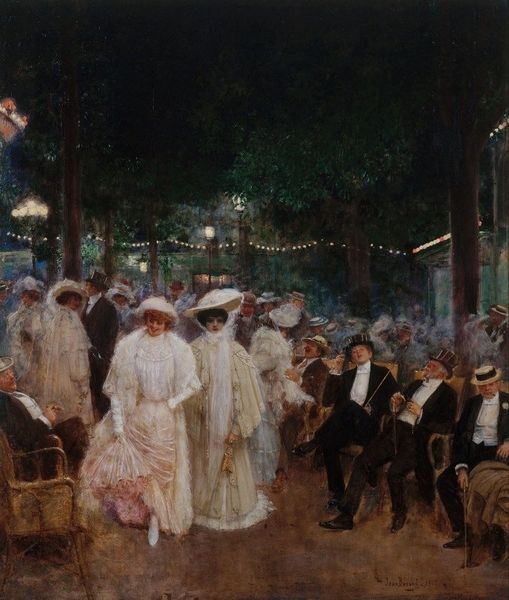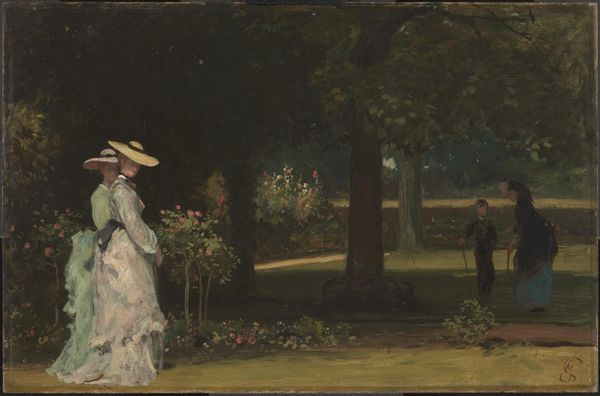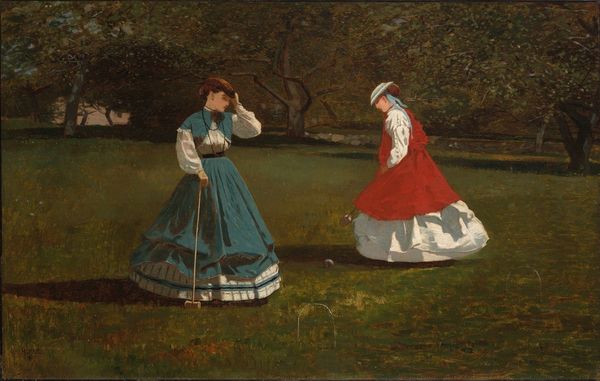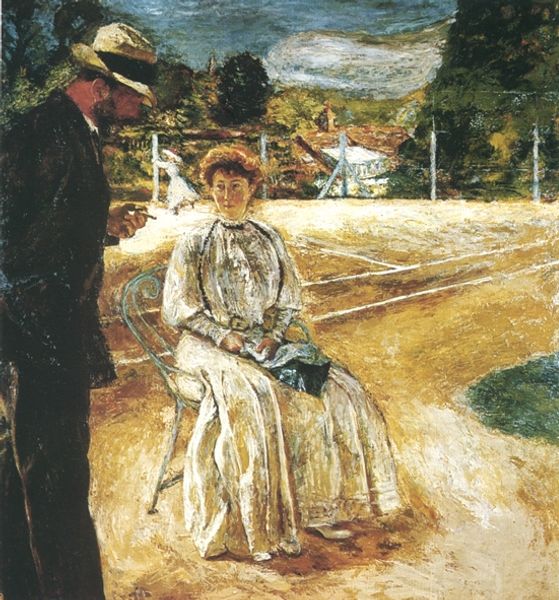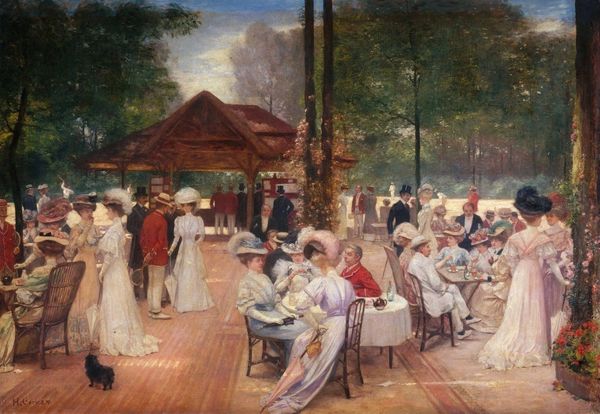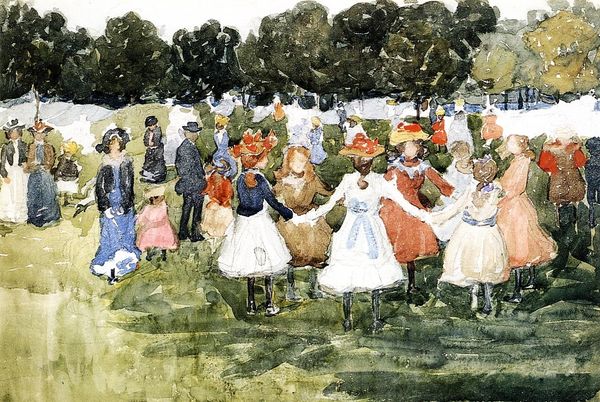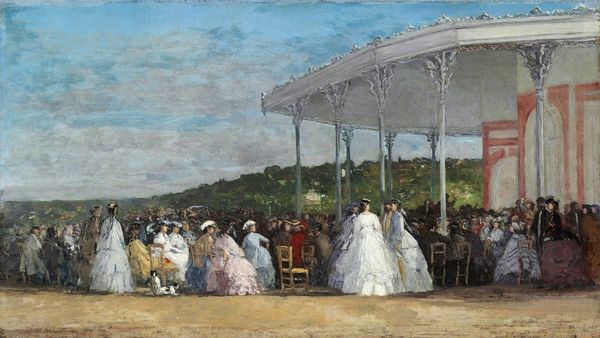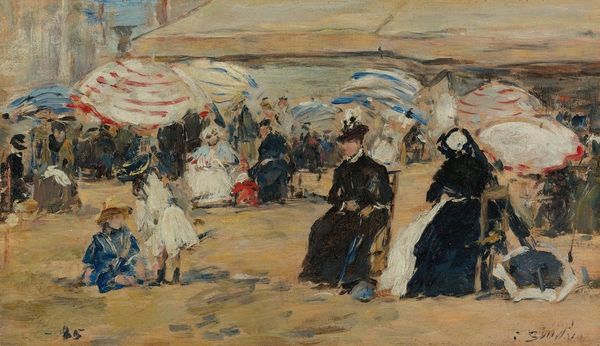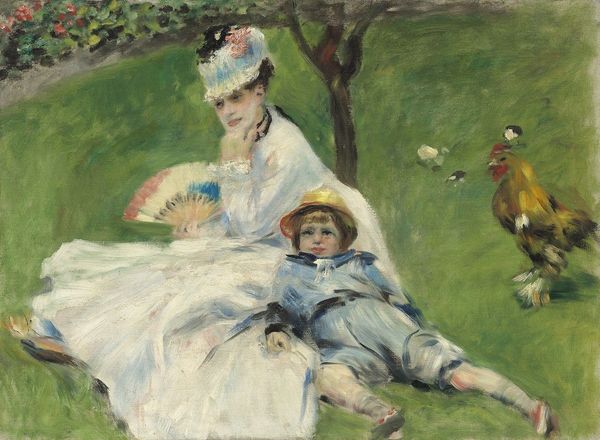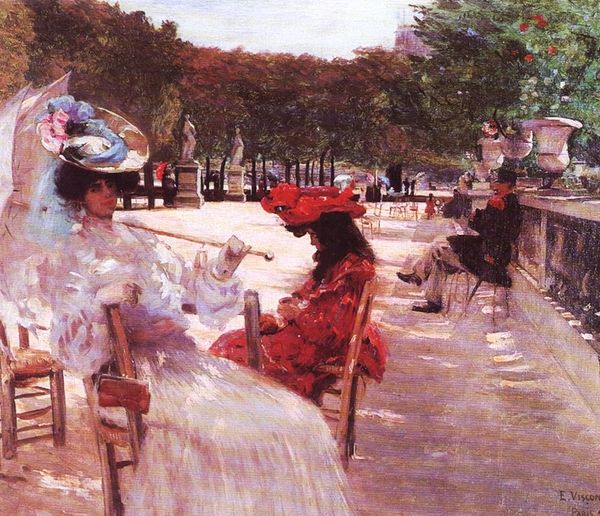
plein-air, oil-paint
#
figurative
#
impressionism
#
plein-air
#
oil-paint
#
landscape
#
figuration
#
oil painting
#
genre-painting
Copyright: Public Domain: Artvee
Curator: Childe Hassam's "Au Grand Prix de Paris," created in 1887, offers us a glimpse into the social dynamics of the late 19th century through this evocative genre scene. Editor: My first impression? A summer daydream. It's a blur of soft whites and greens. Like memory itself, a little hazy, a little romantic. You can almost smell the freshly cut grass and expensive perfume. Curator: Precisely. Hassam situates us within the leisure class, capturing a scene at the prestigious Grand Prix de Paris. These social gatherings were significant sites for the performance of gender and class, reflecting the rigid societal structures of the era. Editor: And the figures? The women in their elaborate dresses—almost bridal in their whiteness—and that top-hatted gentleman hovering nearby… it feels very self-aware. Like they know they're being observed, both by the artist and by us, the viewers. Are they comfortable, or subtly oppressed by those sartorial demands? Curator: That's a critical point. Consider the symbolism of the white dresses – signaling purity and wealth – against the backdrop of a highly exclusive event. It underscores how appearances and access defined social standing. Moreover, these 'plein air' scenes became important avenues through which impressionist artists documented a changing Parisian topography, but in so doing were still necessarily filtering vision through bourgeois perspectives. Editor: I wonder what those ladies are chatting about. Probably not horse racing, right? I bet they're dissecting someone's dress or whispering some forbidden juicy secret about one of those other fine folk in attendance. Curator: Perhaps they’re also discussing the politics of the day. After all, the late 1880s in France was a politically charged period, with debates swirling around republicanism, colonialism, and the role of women in society. We must not flatten them into caricatures because of their wealth; the personal is, of course, political. Editor: True enough, still, it is difficult not to fall back onto cliches here. Hassam, as a well-heeled outsider, positions himself perfectly to play into or subvert such norms, and what is communicated isn't easily decoded. I feel, gazing into that misty scene, that those women had stories far exceeding a leisurely summer afternoon and pretty dresses. Curator: I agree completely. These visual snapshots offer access into moments freighted with much larger networks of political, social, and personal narrative. Editor: Makes you think differently about summer afternoons and fancy dresses, huh? There’s always more than meets the eye.
Comments
No comments
Be the first to comment and join the conversation on the ultimate creative platform.
